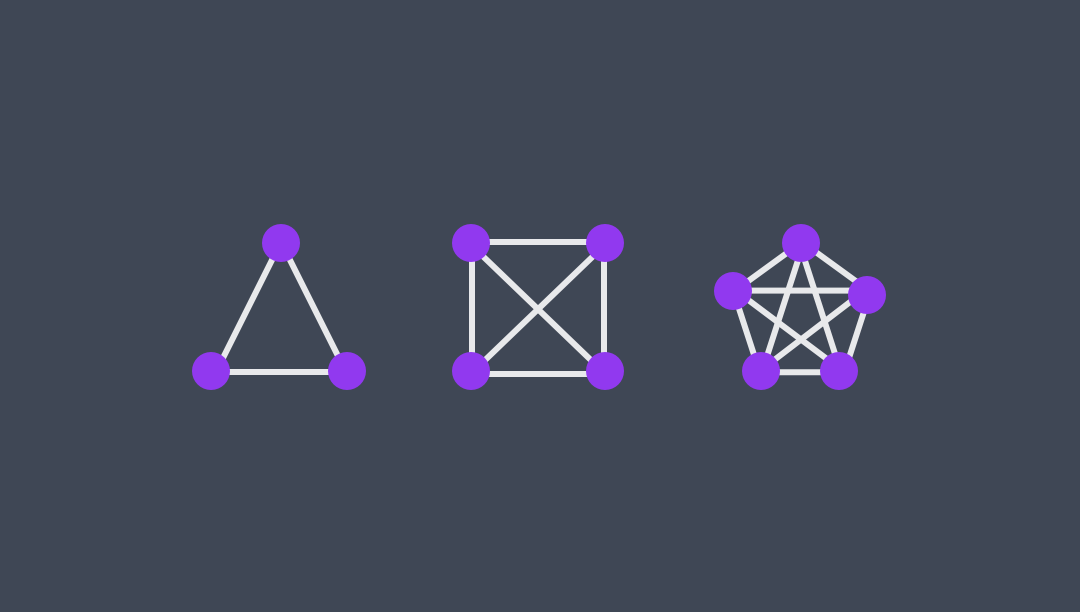Is your focus inside or outside?
5 minute read
A human requires a larger support structure than an amoeba. A single cell doesn't require a skeleton; a human kind of needs one or we're in trouble. This metaphor can be applied to businesses too - a larger business requires more of a support system than a smaller one. A business of 3 people doesn't have a HR department, a business of 3000 does.
Inside focus versus outside focus
When you're working in a small business, it's easy to focus on your customers. There's very little energy expended inwards. When I worked in agencies of 8 or 9 people, the majority of my days were spent either working on client projects or talking directly with clients, both billable activities. We had plenty of internal meetings, but they were directly related to that client work. Or reviewing where our finances were at. Everyone in the business had a good grasp on where we stood financially. If you didn't, you could look at the business owner and get a pretty quick read.
In a larger business, the 'skeleton' means that you naturally have to spend more time focussed inwards. It's hard to pull everyone into a room and have a chat about where we are at financially when you're at 3000. When there's 3, there's more of a chance to ask questions and align.

As you can see above, more people means exponentially more lines of communication. 3 people means 3 lines, 4 people means 5 and when we get to 5 people it's at 10 lines of communication.
If we keep going to 3000 people, there's a whole lot more lines and a whole lot of room for misinterpretation. That's why we end up cascading information down from the top, creating new layers of communication. Not only does this potentially dilute the message, but it also takes more time. More time, and more meetings.

Lots of people and lots of departments can start to slow things down. It results in new processes being involved. All of a sudden before you talk to a customer there are four different teams you have to pass it through. That takes time. There's compliance training you have to do. That takes time.
All this leads to more time focussed internally and less time focussed on the customers. Without those customers, your business won't exist. Every time a process slows someone down from doing their work, you're slowing down the delivery of value to a customer. It's contributing to churn. It's contributing to a reduction in revenue.
It's not simple to connect every single small event to a customer leaving you, but every single event that happens is indicative of the culture that you've created. And that culture 100% impacts those customers leaving you.

So what?
It's easy to get sucked into the world of a company. It becomes the centre of your world. In this world, your customers are using your product and potential customers your number one competitor's product. Your main concerns are your tricky product manager and your team's target. You're naturally putting on blinkers to the rest of the world.
This all sounds negative. And sure, it's a problem big companies face and it's a problem smaller companies face as they start to scale up. But there's ways to fix this.
Personally, I love working in a larger organisation because your opportunity for impact is significant. In order to have that impact, it's all about how you direct your attention into the right activities and ensure you're doing your part to keep customers, the reason you exist, front of mind.
How can I do that?
Decrease the distance between the customer and your team
Good product design teams are spending a lot of time with their customers. The best product design teams are making sure their teams are spending a lot of time with their customers. Decrease the distance between your team and the customer, by creating opportunities for customer contact.
No way to build context like a contextual inquiry
We do a lot of remote user testing and interviews. This is because it's easier to organise for both us and out customers. This can be great for concept testing and validating ideas, or understanding the usability of a workflow. What it isn't good for is picking up on customer context. Contextual inquiries and in-person interviews are the only way to do this and it's worth the time and effort it takes. You'll learn many things you can't learn on a Zoom call.
Look at how many of your activities are internal vs external
I'm not going to go all calendar planner here. I'll leave that to the Time Dorks. But a quick win is to have a look at how you spend your time and look at how many hours you spend on internal focussed activities versus external. The goal is here is never to eliminate the internal activities, it's to focus on balance.
Reframe goals in terms of the customer
Whatever it takes to communicate to your team that the work they are doing impacts the customers, you should be doing. It might be as simple as reframing a business goal in terms of the customer problem. It might be creating personas, mindsets, archetypes, whatever you want.
In summary
Whether you're working in a company big or small, it's easy to get caught up in that world. Some roles require more internal focus than others. That's cool. But just remember to keep in check the balance between your internal and external focus and make sure that customers, the real reason that you have a job in the first place, are as front of mind in your teams as they should be.
Further reading
I was reflecting on a few different things I've read as I wrote this. If this interests you, these books are worth a look:
